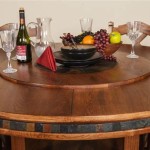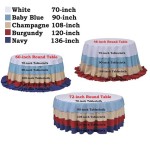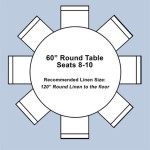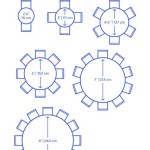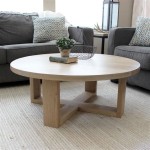How to Properly Use Tablecloths for a Wedding Ceremony
Tablecloths are integral components of wedding décor, serving both functional and aesthetic purposes. They protect tables, establish the color palette and theme, and contribute to the overall ambiance of the wedding ceremony and reception. Choosing and utilizing tablecloths correctly can elevate the event's visual appeal significantly, whereas improper selection and usage can detract from the intended elegance. A comprehensive understanding of proper tablecloth utilization is therefore essential for wedding planners, caterers, and anyone involved in the event's design and execution.
The selection of appropriate tablecloths hinges on several factors. These include the table size and shape, the overall wedding theme, the venue’s existing décor, and the intended budget. Ignoring these variables can lead to mismatched aesthetics or functional inconveniences, impacting the guest experience. This article elaborates on the critical aspects of selecting and deploying tablecloths for wedding ceremonies, ensuring a cohesive and visually pleasing setup.
Understanding Tablecloth Sizes and Shapes
One of the most common mistakes in wedding planning is using incorrectly sized tablecloths. This can lead to ill-fitting linens that either expose portions of the table or pool excessively on the floor, creating a tripping hazard. Accurate measurement of the tables is the fundamental first step. Table sizes vary, with common shapes including round, rectangular, and square.
For round tables, measure the diameter. Tablecloth sizes are often described in terms of diameter as well. A tablecloth size should exceed the table's diameter to allow for a "drop," the portion of the tablecloth that hangs down the sides. The ideal drop usually varies based on the event’s level of formality and the desired aesthetic. A shorter drop, typically around 6-12 inches, is suitable for casual events, while a longer drop, reaching the floor (around 30 inches), is considered more formal and elegant.
Rectangular tables require measurement of both length and width. Add twice the desired drop to both the length and width to determine the necessary tablecloth dimensions. For instance, a 6-foot (72-inch) long and 30-inch wide rectangular table with a 15-inch drop would require a tablecloth that is 102 inches long and 60 inches wide. Square tables follow a similar principle; measure the side length and add twice the desired drop. Failing to accurately calculate the dimensions results in either a tablecloth that is too short, exposing the table legs, or too long, creating an unkempt and potentially hazardous environment.
Beyond standard sizes, specialty tables such as serpentine or half-round tables may require custom-made tablecloths or creative draping solutions. Consulting with a linen rental company or a professional decorator can provide tailored options for uniquely shaped tables.
Furthermore, consider the table height. Standard table heights are generally 30 inches, but variations can occur. If using unusually tall or short tables, adjustments to the tablecloth drop may be necessary to maintain the intended aesthetic. Table skirts, separate pieces of fabric that attach to the table edges, can be used in conjunction with shorter tablecloths to achieve a floor-length appearance without the expense of a full-length linen.
Choosing the Right Fabric and Color
The fabric and color of the tablecloth significantly influence the overall wedding aesthetic. Fabric choices range from basic polyester to luxurious linen and satin, each offering distinct visual and tactile qualities. Polyester is a durable and affordable option, ideal for large events where budget is a primary concern. It resists wrinkles and stains, making it a practical choice for high-traffic areas. However, polyester lacks the inherent elegance of natural fibers.
Linen is a classic and sophisticated choice for wedding tablecloths. Its subtle texture and natural drape exude understated elegance. Linen is breathable and absorbent, making it comfortable for guests. However, linen wrinkles easily and requires careful pressing to maintain its pristine appearance. It also tends to be more expensive than polyester.
Satin offers a lustrous and opulent appearance, perfect for formal weddings. Its smooth, glossy surface reflects light, adding a touch of glamour to the event. However, satin is delicate and prone to snags and stains. It also requires professional cleaning to maintain its sheen.
Color selection should align with the overall wedding color palette and theme. White is a timeless and versatile choice, suitable for both classic and modern weddings. It provides a neutral backdrop that allows other décor elements, such as floral arrangements and centerpieces, to stand out. Ivory is a softer alternative to white, offering a warmer and more romantic ambiance.
Colored tablecloths can be used to introduce pops of color or to reinforce the wedding theme. For example, pastel hues are often used for spring or summer weddings, while rich jewel tones are suitable for fall or winter events. Consider the venue's existing décor when selecting tablecloth colors. Choose colors that complement the walls, flooring, and lighting to create a cohesive and harmonious look. Avoid colors that clash with the venue's existing color scheme, as this can create a visually jarring effect.
Patterned tablecloths can add visual interest and texture to the wedding décor. However, use them sparingly, as they can easily overwhelm the space. Consider using patterned tablecloths on accent tables or as runners on solid-colored tablecloths to create a subtle and elegant effect. Avoid using overly busy or distracting patterns, as these can detract from the overall aesthetic.
Furthermore, consider the lighting when choosing tablecloth colors. Colors appear different under different lighting conditions. For example, cool-toned colors tend to look more vibrant under fluorescent lighting, while warm-toned colors tend to look more flattering under incandescent lighting. Test the tablecloth colors under the venue's lighting to ensure they achieve the desired effect.
Proper Tablecloth Placement and Maintenance
Even the most exquisite tablecloth can appear unkempt if not placed properly. The tablecloth should be centered on the table, ensuring that the drop is consistent on all sides. Avoid simply throwing the tablecloth over the table; instead, carefully unfold it and smooth out any wrinkles before positioning it. Using a table protector underneath the tablecloth can help to prevent spills from soaking through and damaging the table, as well as providing a smoother surface for the tablecloth to lie on.
For round tables, use a measuring tape to ensure that the center of the tablecloth aligns with the center of the table. Adjust the tablecloth as needed to achieve a uniform drop all around. For rectangular or square tables, align the edges of the tablecloth with the edges of the table. Ensure that the corners are evenly spaced and that the drop is consistent on all sides.
If using multiple tablecloths, such as an overlay or a runner, ensure that they are properly aligned and coordinated. An overlay is a smaller tablecloth placed on top of a larger tablecloth, often in a contrasting color or fabric. A runner is a long, narrow piece of fabric that runs down the center of the table, often used to highlight a centerpiece or to add visual interest.
Tablecloth maintenance is crucial for preserving their appearance and preventing stains. During the wedding reception, promptly address any spills or stains. Blot the spill with a clean, absorbent cloth, working from the outside in to prevent it from spreading. Avoid rubbing the spill, as this can damage the fabric. Use a stain remover specifically designed for the fabric type to treat any stubborn stains. Consult with a professional cleaner for delicate fabrics or difficult stains.
After the wedding, properly launder or dry clean the tablecloths according to the manufacturer's instructions. Store the tablecloths in a clean, dry place, away from direct sunlight and moisture. Fold them carefully to prevent wrinkles and to ensure they are ready for future use. Consider using garment bags to protect the tablecloths from dust and pests.
Furthermore, regular inspection of the tablecloths is essential for identifying any damage or wear and tear. Repair any tears or holes promptly to prevent them from getting larger. Replace any tablecloths that are stained beyond repair or that are significantly damaged. Investing in high-quality tablecloths and maintaining them properly will ensure that they remain a valuable asset for future events.
By adhering to these guidelines, wedding planners and individuals can ensure that tablecloths contribute positively to the overall aesthetic and functional success of the wedding ceremony and reception. Careful attention to size, fabric, color, placement, and maintenance will result in a polished and elegant presentation that enhances the guest experience and reflects the couple's vision.

Your Guide To Wedding Reception Linens

Wedding Linens Where To Buy Or What Know

How To Maximize White Round Tablecloths For Events Cv Linens

7 Tips For Choosing Your Wedding Table Linen Colors Cv Linens

Ultimate Linen Guide For Weddings Special Events Cv Linens

Ivory Vs White Tablecloths Table Linens Best Wedding Choices Tablecoversnow Com

The Ultimate Guide To Designing Your Wedding Reception Total Events Llc

What Is A Table Overlay Cv Linens

Choosing The Perfect Wedding Linens Color Schemes Expert Advice

Tips For Instagrammable Wedding Reception Table Styling Organic Events Supply Co
Related Posts


